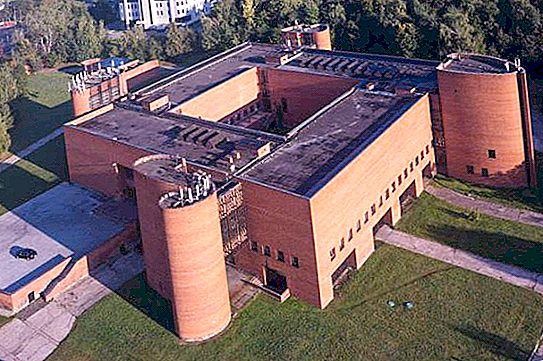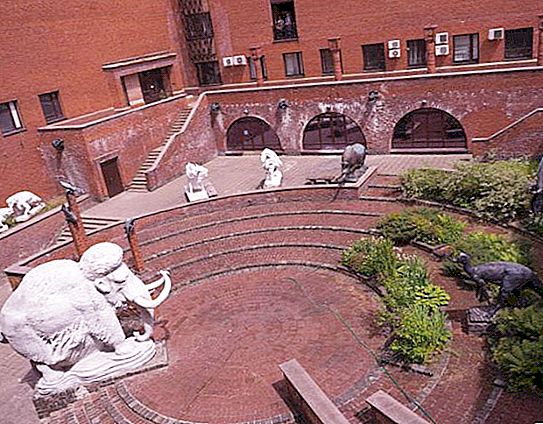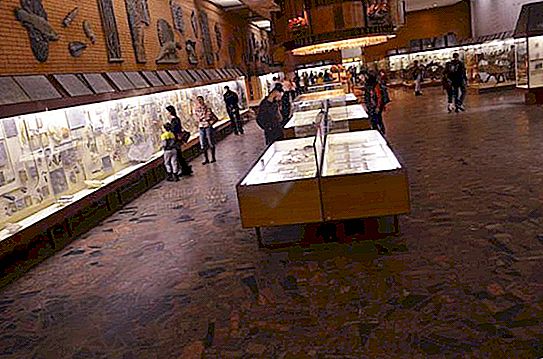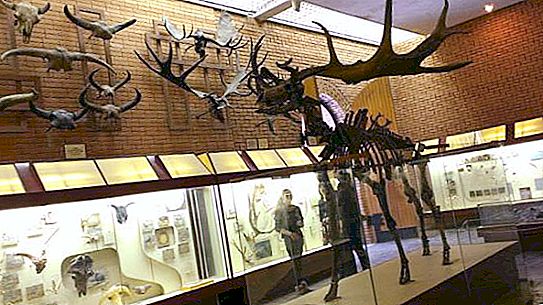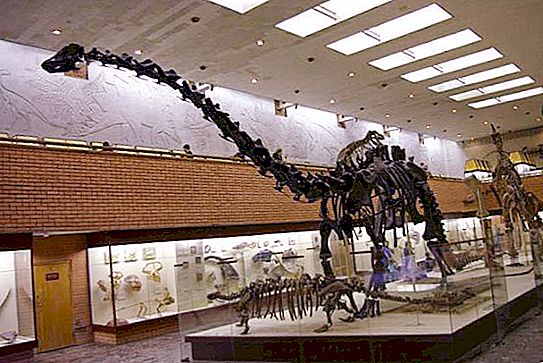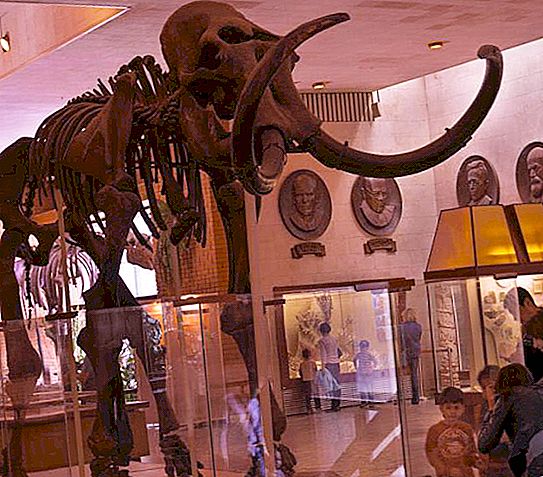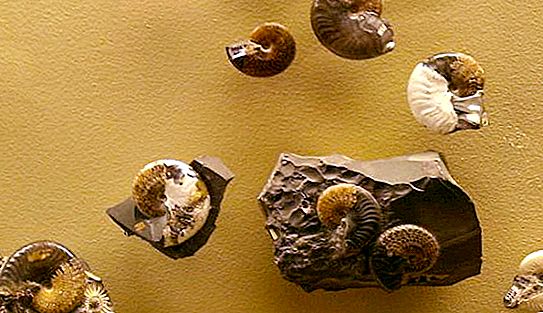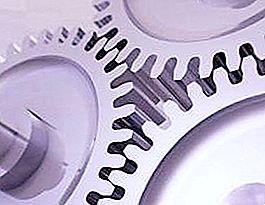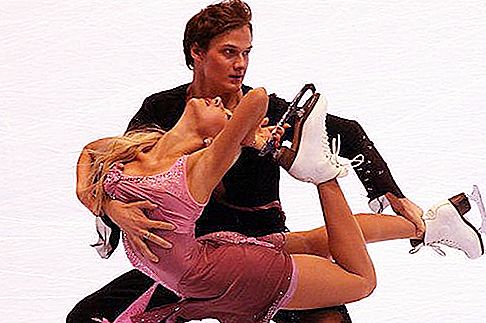The Yu.A. Orlov Paleontological Museum in Moscow has one of the largest collections in the world on the evolution of the Earth's biosphere. The institution is part of the Paleontological Museum of the Russian Academy of Sciences.
History
In 1714, the Kunstkamera was created by Tsar Peter I, in which outlandish finds were collected, and the main revenues were fossil animals. Several museums were formed on the basis of this collection, including the Paleontological Museum. By the time of its foundation, the funds contained a huge number of exhibits located in two halls with an area of 1, 500 square meters. Further replenishment of the exposition was planned due to scientific expeditions. In 1931 a general plan of the museum was developed, but the construction was not even started in connection with the transfer to Moscow.
The opening of the institution in the capital took place in 1937 in the former building of the Count Orlov’s arena, the name officially sounded as follows: Paleontological Museum. Address (in Moscow): Bolshaya Kaluzhskaya street, building No. 16. The first exhibition occupied only 700 square meters. During the Great Patriotic War, the exposition was closed, and most of the collection went into evacuation. The opening took place before the end of the war, in 1944, but it was difficult to conduct excursions and place exhibits, as well as keep the storage funds in proper condition. In 1954, the institution was closed.
Another discovery
By the efforts of the director of the museum, academician Orlov Yu. A., the authorities considered a project for the construction of a new building. The building for the exhibition was developed by a group of architects, the idea was so brilliant that the project subsequently received a State Prize. Construction began only in 1972. All works lasted about twenty years, not only museum staff and architects, but also artists, designers, and designers applied their knowledge, talents and skills.
Today the Paleontological Museum is a unique complex, where architecture has become a continuation of science, the creative beginning is adjacent to fossil specimens of several million years old. The building is a stylized fortress with a courtyard, around which are concentrated four exposure areas resembling fortress towers. You can get acquainted with the exhibits by going to the cozy outskirts of the capital, where the Paleontological Museum is located. The address in Moscow is as follows: Profsoyuznaya Street, red brick house No. 123.
Description
The Museum of Paleontology invites every curious person to its halls. The entire exhibition occupies about five thousand square meters of area and is divided into four main zones, where six thematic halls are located. Passing through them, the visitor gets acquainted with ancient animals and traces the entire path of evolution from the first life forms known to people to modern representatives of flora and fauna.
Many fossils were transferred to the collection by participants in scientific expeditions that took place in Russia, Mongolia, China, and the former Soviet republics. Unique exhibits do not leave anyone indifferent. Everyone can visit interesting excursions by going to the Paleontological Museum. Address in Moscow: st. Profsoyuznaya, house 123. Each hall of the museum exposition shows both characteristic representatives of the animal world of its era, and a collection of plants of the same period.
Museum Halls
The permanent exhibition is collected in six rooms:
- Introductory. The first hall of the museum introduces the excursionist to the general concepts of paleontology, research methods, and the main sections of science. The exposition is an ensemble consisting of exhibits and monumental compositions reflecting the evolution of life. The large-scale panel “The Tree of Life” contains images of animals, the plant world, reflects transitional forms, the emergence of new species and eras in the life of the Earth. The area of the panel is about 500 square meters, it rises up eight meters, this is almost the entire inner surface of the tower. On the second floor there are stands with materials about the science of paleontology. The center of the hall is a cast of the skeleton of a rhino indricoteria.
- Hall of the Precambrian period. Here are collected representatives of the flora and fauna of the period, about which for a long time almost nothing was known. The majority of the collection is composed of invertebrate representatives, and the evolution of the plant world is also traced here.
- Moscow region. The hall presents a collection that reflects the geology, paleontology of not only Belokamennaya: its coverage is somewhat larger than the modern geographical boundaries of the Moscow region. This includes Kaluga, Yaroslavl, Vladimir and other nearby regions. The Moscow region has long been a water element, and the collection has many exhibits of that period. Geological sections typical of the area are also presented, fossil mollusks, invertebrates, biological colonies, ammonite shells and much more are shown.
- Late Paleozoic. The museum hall is dedicated to the evolutionary process, as a result of which the first vertebrate animals appeared. During this period, forests grow with outlandish trees and other plants. Exhibits are rock cuts, where ancient fish and small vertebrates were imprinted. On the podium are shown casts of skeletons of ancient dinosaurs. In addition to the exposition, in each hall of the museum, attention is attracted by the unique design with the author's works of artists. You can evaluate them by coming to the Paleontological Museum. The address in Moscow is the same: Profsoyuznaya street, house number 123.
- Mesozoic. One of the most spectacular rooms. Here are dinosaurs, plants of the Mesozoic era, the associated fauna. Some species that originated in that period still live, for example, lizards, snakes, turtles, crocodiles and many others. The exposition presents a large collection of skeletons of dinosaurs, pterosaurs, etc.
- Cenozoic A tour of this hall introduces the visitor to the origin of the class of mammals, talks about their development, movement across the continents and much more.
Visiting the exposition will be interesting for adults, and for children it is useful and exciting. To understand this, you should come to the Paleontological Museum in Moscow. Address / metro: Profsoyuznaya street, 123, metro station "Konkovo" or "Teply Stan".
Tours
For different ages of schoolchildren, excursion programs have been created that complement the basic courses of biology and geography:
- For primary school students: “A fascinating paleontology”, a sightseeing tour “In the world of the ancient giants”, “Meet: dinosaurs!”.
- For students in grades 5-8: "Dinosaurs and time", "How animals came about, " "Ways of development of the animal world."
- For high school students: “Development of mammals”, “Evolution of the organic world”
- General tour for any age: "Characters of the Jurassic period."
The doors to the Paleontological Museum in Moscow are always open for visitors. The address and mode of operation are as follows: Profsoyuznaya street, 123. Access to the exposition is open from Wednesday to Sunday from 10:00 to 18:00. From October to May, weekends are Monday and Tuesday.
Institute
The museum is organized at the Paleontological Institute. A.A. Borisyak. This is a one-of-a-kind Russian institution, the main issues of which are the study of fossil organisms, their properties, development. Also, the sphere of study includes evolutionary processes, the formation of an ecosystem, and the biosphere of the entire planet.
The staff of researchers is specialists in various fields of biology. The institution conducts scientific research, several new areas were discovered - paleoecology, bacterial paleontology, taphonomy and others. Active cooperation is carried out with the Russian Academy of Sciences, where the institute’s employees participate in the research programs “Biological Diversity”, “The Origin of the Biosphere and the Evolution of Geo-Biological Systems” and several others.
Other activity
A large amount of work is done by the museum staff for educational purposes. So, the Paleontological Circle was created, where schoolchildren gain additional knowledge about the biosphere, go to the excavations in the Moscow region, listen to lectures, and visit the laboratory of the institute.
In practical classes, children learn the secrets of preserving extracted minerals, learn to make casts and collect skeletons, and study in laboratory conditions the structure of prehistoric plants and animals. Anyone can discover the secrets of nature can join the circle, for this you need to contact the Paleontological Museum. You probably already remembered the address in Moscow: Profsoyuznaya street, 123.
Every year, a paleontological workshop is held at the museum, in which school teachers, high school students, methodologists of the secondary education system and others take part. The program is aimed at an in-depth study of ecology, geography, paleontology, the main direction is local history. To participate, you must contact the museum. Classes are held in the same building where the Paleontological Museum in Moscow is located. The address is known: Profsoyuznaya street, 123.
